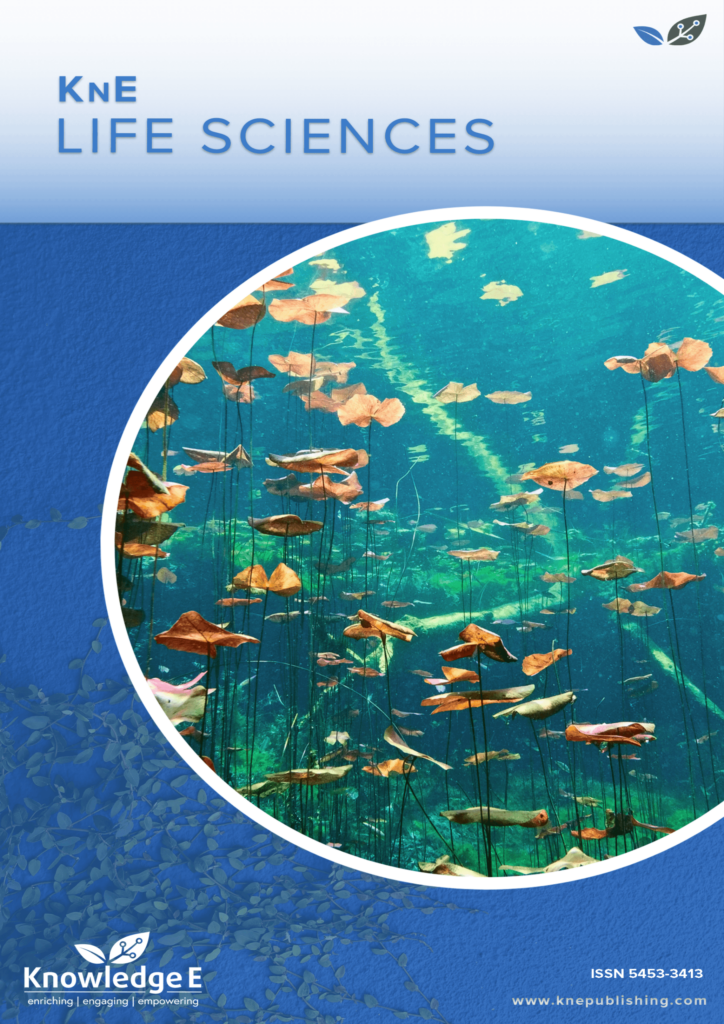
KnE Life Sciences
ISSN: 2413-0877
The latest conference proceedings on life sciences, medicine and pharmacology.
Water Sustainability: Emerging Trends for Water Quality Management
Published date:Sep 11 2017
Journal Title: KnE Life Sciences
Issue title: International Conference on Natural Resources and Life Sciences (NRLS-2016)
Pages:118-130
Authors:
Abstract:
Water sustainability needs an integrated approach to meet the water need of the present without compromising the ability of future generations to meet their own need of water. It includes water security and water scarcity. The water demand is increasing every year, while the planet’s capacity to sustain increasing demands for water is challenged. The main global water problems fall into three categories. The first is too much of it, secondly is too little of it and thirdly, it is too dirty. The first category is due to extensive flooding, the second category is due to serious drought and the third category is due to pollution and misuse of water which needs water quality management. Nowadays, there are 1.2 × 109 people live in areas of water scarcity and 2.6 billion people in global are lacking safe water supply. There are (6 to 8) × 106humans being are killed each year from water-related disasters and disease. In Indonesia, there is about 37 × 106 people lack access to safe water due to water quality issue. In this paper, emerging trends in water quality management to support water sustainability and the water-energy nexus will be discussed.
References:
[1] Tauseef SM, Abbasi T, Abbasi SA. Energy recovery from wastewaters with high-rate anaerobic digesters. Renewable Sustainable Energy Reviews 2013;19:704–741.
[2] van Dijk L, Roncken GCG. Membrane bioreactors for waste water treatment: The state of the art and new developments. Water Science and Technology 1997;35(10):35–41.
[3] Chu L, Zhang X, Yang F, Li X. Treatment of domestic wastewater by using amicroaerobic membrane bioreactor. Desalination 2006;189(1–3);181–192.
[4] Le-Clech P, Chen V, Fane TAG. Fouling in membrance bioreactors used in wastewater treatment. Journal of Membran Sci ence 2006;284(1–2):17–53.
[5] Friha I, Karray F, Feki F, Jlaiel L, Sayadi S. Treatment of cosmetic industry wastewater by submerged MBR with consideration of microbial community dynamics. International Biodeterioration and Biodegradation 2014;88:125–133.
[6] Chang S. Anaerobic membrane bioreactors for wastewater treatment. Advances in Chemical Engineering and Science 2014;4:56–61.
[7] Metcalf, Eddy I, Tchobanoglous G, Stensel HD, Tsuchihasi R, Burton F. Wastewater engineering: treatment and resource recovery. 5th ed. New York: McGraw-Hill; 2014. p. 2048.
[8] Vargas A, Moreno-Andrade I, Buitrn G. Controlled backwashing in amembrane sequencing batch reactor used for toxic wastewater treatment. J ournal Membran Sciences 2008;320(1–2):185–190.
[9] Khan SJ, Ilyas S, Javid S, Visvanathan C, Jegatheesan V. Performance of suspended and attached growth MBR systems in treating high strength synthetic wastewater. Bioresource Technology 2011;102(9):5331–5336.
[10] WEF, Membrane bioreactors: Water environment federation (WEF), In: WEF Manual of Practice No. 36. New York: McGraw-Hill; 2011. p. 262.
[11] Badani Z, Ait-Amar H, Si-Salah A, Brik M, Fuchs W. Treatment of textile waste water by membrane bioreactor and reuse. Desalination 2005;185(1–3):411–417.
[12] Spagni A, Casu S, Grilli S. Decolourisation of textile wastewater in asubmerged anaerobic membrane bioreactor. Bioresource Technology 2012;117:180–185.
[13] Dolar D, gros M, Rodriguez-Mozaz S, Moreno J, Comas J, Rodriguez-Roda I, Barcel D. Removal of emerging contaminants frommunicipal wastewater with an integrated membrane system, MBR–RO. Journal of Hazardous Materials 2012;239:64–69.
[14] Nguyen LN, Hai FI, Kang J, Price WE, Nghiem LD. Removal of emergingtrace organic contaminants by MBR-based hybrid treatment processes. International Biodeterioration and Biodegradation 2013;85:474–482.
[15] Banihashemi B, Droste RL. Sorption–desorption and biosorption of bisphenol A triclosan, and 17-ethinylestradiol to sewage sludge. Science of the Total Environment 2014;487:813–821.
[16] Trinh T, Van Den Akker B, Stuetz R, Coleman H, Le-Clech P, Khan S. Removal of trace organic chemical contaminants by a membrane bioreactor. Water ScienceTechnology2012;66:1856–1863.
[17] Maeng SK, Choi BG, Lee KT, Song KG. Influences of solid retention time, nitrification and microbial activity on the attenuation of pharmaceuticalsand estrogens in membrane bioreactors. Water Research 2013;47:3151–3162.
[18] Ahmed MB, Zhou JJ, Ngo HH, Guo W, Thomaidis NS, Xu J. Progress in the biological and chemical treatment technologies for emerging contaminant removal from wastewater : A critical review. Journal Hazardous Materials 2017; 32(Part A):274– 298
[19] Chan YJ, Chong MF, Law CL, Hassell DG, A review on anaerobic–aerobic treatment of industrial and municipal wastewater. Chemical Engineering Journal 2009;15(1–2):1– 18.
[20] Ahammad SZ, Bereslawski JL, Dolfing J, Mota C, Graham DW. Anaerobic–aerobic sequencing bioreactors improve energy efficiency for treatment of personal care product industry wastes. Bioresource Technology 2013;139(0):73–79.
[21] Wang N, Xheng T, Zhang G, Wang P. Review on Fenton-like processes for organic wastewater treatment. Journal of Environmental Chemical Engineering 2016;4:762– 787.
[22] Guclu D, Sirin N, Sahinkaya S, Sevimli MF. Advanced treatment of coking wastewater by conventional and modified fenton processes. Environmental Progress and Sustainable Energy 2013;32(2):176–180.
[23] Riadi L, Hwa L, Sukharaharja A. Decolorization kinetic from coffee effluent with photo fenton reaction. Purifikasi 2011;12(3):1–8.
[24] Riadi L, Wasanto R, Herlambang AR,Vania SM, Widyasayogo A. A comparative study of yarn dyed wastewater using fenton’s reagent and ozonation: Removal efficiency and economic analysis. Reaktor 2016;16(4):207–211.